Subscribe to our Newsletter
Get regular stories, tips and solutions from Sustainable America and opt-in to receive roundups of the latest food and fuel news.

May 26th, 2012 | By Aubrey Yee
What is food waste and what can I do about it?
Food waste is a significant problem. According to the United Nations Food and Agriculture Organization, approximately 1/3 of food produced for humans in the world is either lost or wasted.
Think about that for a moment: 1/3 of the food we produce and all the energy, time, resources (water, land) and money that went into growing it, packaging it and shipping it is wasted.
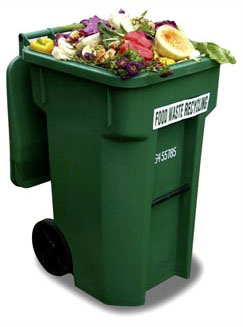
Here are a few other startling facts from the UNFAO website:
Some of this loss is due to poor infrastructure, especially in developing countries, when the food is processed, stored and package for distribution. But a lot of the waste comes from consumers in the developed world.
What can you do to curb your own food waste?
It’s time to realize that throwing away food is no longer acceptable practice. Raising awareness and changing personal habits is the first step.
May 23rd, 2012 | By Aubrey Yee
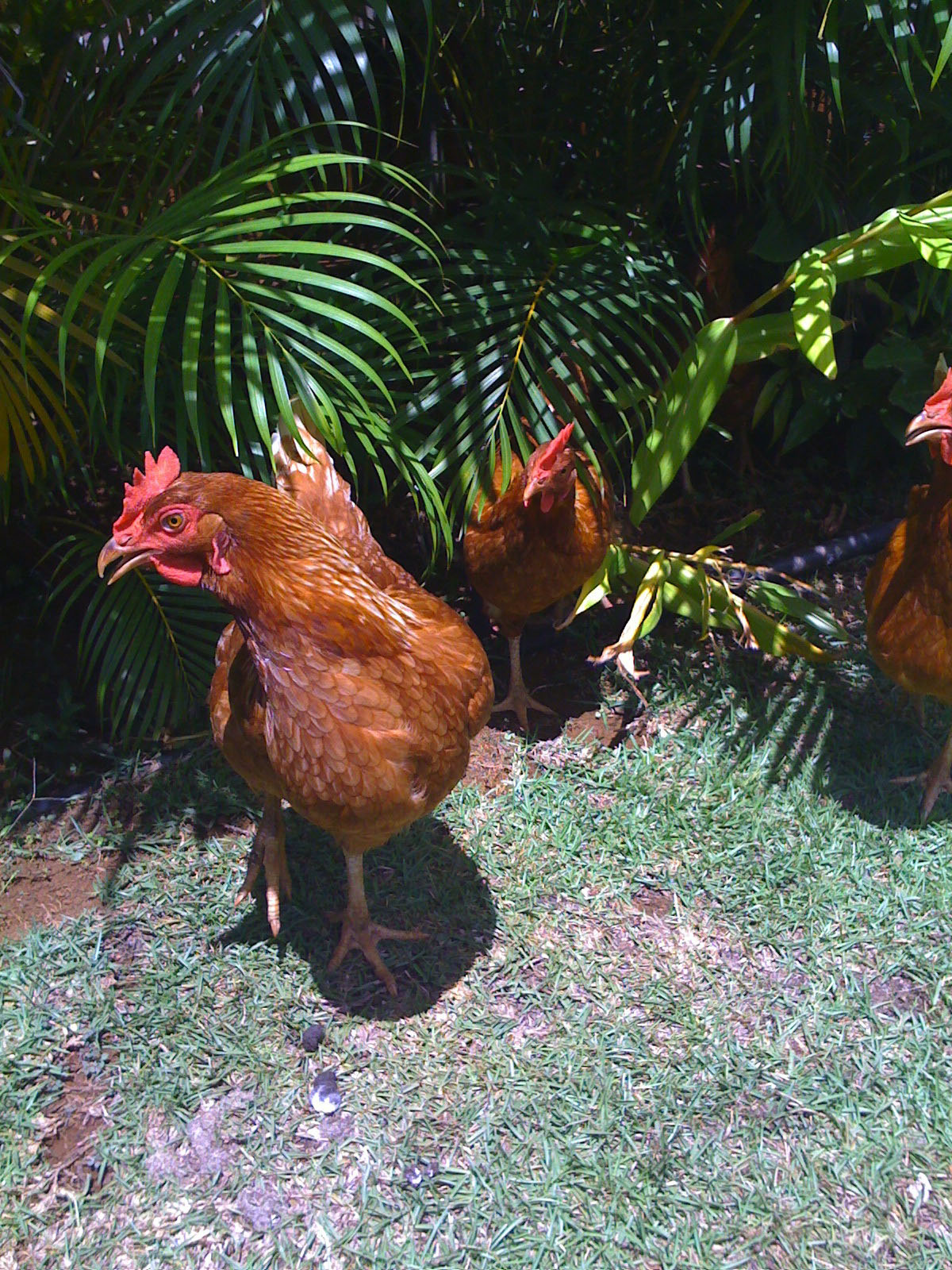 Imagine having access to your own eggs, fresh, every day. When you have your own backyard chickens, you will have access to all the eggs you can eat and you will know exactly what your chickens ate to make those eggs. Chickens are also great upcyclers, they will eat almost all your kitchen scraps - vegetables, fruit, bread, rice… basically anything but chicken!
Imagine having access to your own eggs, fresh, every day. When you have your own backyard chickens, you will have access to all the eggs you can eat and you will know exactly what your chickens ate to make those eggs. Chickens are also great upcyclers, they will eat almost all your kitchen scraps - vegetables, fruit, bread, rice… basically anything but chicken!
Many counties have restrictions on livestock, so check to make sure that backyard chickens are legal in your neighborhood before you start. Courtesy to neighbors is also important protocol. Chickens are noisy animals so you want to bu sure that you place your coop out of neighbors ear shot.
When building a coop, a place for the chickens to nest and sleep at night is crucial, and you should plan for a larger enclosure where they can roam and eat bugs and the feed that you give them.
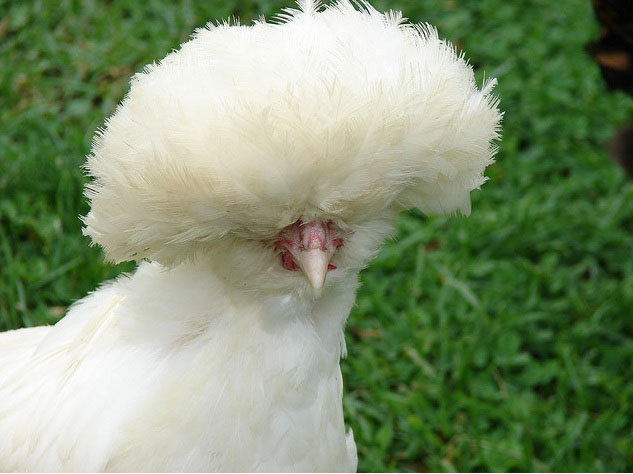
If you want to start with baby chicks, you can buy them online. There are lots of websites that sell different breeds of chicken. If you want a real egg laying machine, check out the Rhode Island Red, but there are also more exotic breeds like the Poodle Chicken… enough said.
If you start with chicks, you’ll want to keep them in a box with a warming lamp for about the first 6 weeks and they will only eat chick started feed until they get old enough to be on their own in the coop.
For the coop and enclosure, make sure you have:
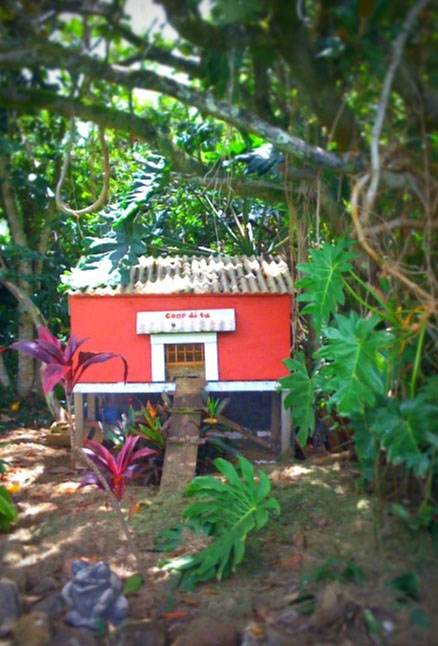 If you have a fully secure enclosure then you don’t have to clip their wings. If your enclosure is just fenced, you will have to clip the chickens wings every few weeks. They are birds and they can fly!
If you have a fully secure enclosure then you don’t have to clip their wings. If your enclosure is just fenced, you will have to clip the chickens wings every few weeks. They are birds and they can fly!
For some great coop designs and more information on caring for your chickens, check out Backyardchickens.com and don’t forget to ask your friends for creative omelet recipes!
<br style=’clear:both;”><br style=’clear:both;”>
May 22nd, 2012 | By Aubrey Yee
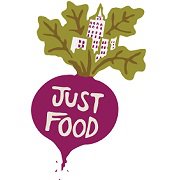 In New York City, a innovative new program aims to bring healthy, fresh food to food pantries and the citizens they serve. Just Food is a New York City non-profit that “connects communities and local farms with the resources and support they need to make fresh, locally grown food accessible to all New Yorkers.”
In New York City, a innovative new program aims to bring healthy, fresh food to food pantries and the citizens they serve. Just Food is a New York City non-profit that “connects communities and local farms with the resources and support they need to make fresh, locally grown food accessible to all New Yorkers.”
Through Local Produce Link, some 44 farmers are connected with New York’s Food Pantries to provide fresh produce. Each food pantry receives approximately 200 lbs. of mixed vegetables each week, about 6 to 10 boxes. The produce varies with the season and often includes more unusual vegetables like bok choi (an asian cabbage) that patrons of the food pantry can try.
Farmers are paid by the pound through funding from the New York State Department of Health’s Hunger Prevention and Nutrition Assistance Program (HPNAP).
Just Food also hosts community cooking programs and provides resources for recipes and nutrition information to help food pantry clients learn how to prepare the vegetables they receive in healthy ways. They host Farm Visits so that food pantry volunteers and clients can meet the farmers that grew their food, making the connection from farm to table.

May 21st, 2012 | By Aubrey Yee
Once upon a time food was eaten in season and in place. That meant no strawberries in winter, no pineapples either. It also meant you’d be hard pressed to find sushi in Las Vegas. Cheap and abundant oil changed all that. And surprisingly not very long ago.
It was really the advent of the modern American interstate roadways in the 1950’s pioneered by Eisenhower that created a way for farmers to cheaply and quickly get their food from farms to tables far away. Today, food is often shipped thousands of miles, or in the case of the sushi in Las Vegas, flown to far flung destinations in refrigerated cargo containers.
Upon signing the “National System of Interstate and Defense Highways” Act into law, Eisenhower is quoted as saying, “More than any single action by government… this one would change the face of America… Its impact on the American economy – the jobs it would produce in manufacturing and construction, the rural areas it would open up – was beyond calculation.”
The new roadways combined with cheap and abundant oil to power trucks for shipping have completely changed the way American’s eat. We think nothing of seeing strawberries in the grocery store on a cold winter morning and nothing of the ability to order New Zealand Lamb on a menu. These are luxuries we have come to expect. But many who subscribe to the locavore movement say that to have a truly Sustainable America, we need to get used to eating food grown closer to home.
Locally grown whole foods are more affordable, support local businesses, have lower carbon footprints as a result of less transportation and are all around healthier than mass produced, processed foods. That means eating in season and eating according to place.
May 17th, 2012 | By Aubrey Yee
8 Extraordinary Greens is a visionary project by artist Jenna Spevack. By constructing 8 pieces of furniture - a chair, kitchen cabinet and suitcase among others - she aims to encourage ideas about how to use our most domestic of objects in new ways to grow food. What could be more local than a dining chair that doubles as a salad garden?
Jenna’s aim is to: provide healthy greens to extraordinary people with ordinary incomes. To do this, she developed a sub-irrigated system for growing micro-greens - energy packed, edible plants, that uses lights and stainless steel growing trays incorporated into the furniture.
On the one hand an architectural design project, this is on the other hand an abstracted artist comment on the different values we place on food. In one exhibit, she explores Aesop’s fable “The Cock and the Jewel” which is a tale with lessons on relative value.
At her “farmstand” exhibit, visitors have the option to purchase 8 different micro-greens. You determine the price of your own exchange based on a set of choices that will support local, urban agriculture non-profits in New York city. Each transaction is recorded in the form of a “receipt” signed by both the visitor and the artist. A duplicate “receipt” is created and hung in the gallery to show the collective nature of all the different choices and donations made.
The project is on display now through June 2nd at the Mixed Greens Gallery in NYC.
May 10th, 2012 | By Nicole Rogers

Global consumption of fish has doubled since the 1970s. In the US we’ve witnessed a boom in the popularity of sushi restaurants, the Mediterranean Diet is all the rage, and the benefits of omega-3 fatty acids are hailed on every talk show. It’s no wonder more Americans are seeking fish is an important part of a healthy, well-rounded, not to mention delicious diet.
As healthy as fish can be for our bodies, fishing can be a real problem for our oceans. Overfishing and other unsustainable fishing practices are the greatest current threat to our oceans, according to Ocean Wise. Aside from direct damage to the ocean, the carbon footprint of fishing can be huge. “Over 95% of the seafood consumed by the community of Santa Barbara, including UCSB, is imported. Additionally, at least 95% of the seafood caught locally is exported,” reports the Associated Students Coastal Fund. And Santa Barbara is a coastal area with fisheries nearby! Imagine the energy expenditure, not to mention the cost, of such a process.

Enter the Santa Barbara Sustainable Seafood Program. Run by the Santa Barbara Museum of Natural History, their mission is to help the public make more informed decisions about the seafood we eat. Local restaurants and markets gain free membership to the program by taking a pledge to take steps to avoid unsustainable seafood. In return, the program helps members make the switch to sustainable seafood, and promotes member businesses by letting the community know that they provide consumers with an alternative to unsustainable seafood. Each restaurant and market gets a certificate and a sticker for their window to signify their participation in the program. In addition the Sustainable Seafood Program promotes participating businesses through exhibits, banquets and festivals held at the Ty Warner Sea Center.
An exciting development this spring: A Community Supported Fishery Program. Like a farm CSA, the CSF will provide local seafood shares directly to the consumer. The program, funded by the Associated Students Coastal Fund, starts this spring at the University of California Santa Barbara, and will go community-wide next year.
A local fisherman’s perspective on the CSF:
“California fisheries have some of the most stringent regulations and well managed fisheries in the world, and we (fishermen) embrace those regulations if it protects our marine ecosystem while providing food for the community. A CSF provides an opportunity for us to fish less and make more money to support our families.” - Stephanie Mutz, a commercial fisherman and Research Coordinator of Commercial Fishermen of Santa Barbara
The future looks bright for a program that helps local fishermen, the community and the ocean.
May 6th, 2012 | By Aubrey Yee
Thousands more farmer’s markets are getting ready to accept food stamps as a form of payment. As part of the USDA’s (US Department of Agriculture) mission to get Americans eating more healthy, fresh food, they have been working to encourage the use of EBT (Electronic Benefit Transfer - another term for “food stamps”) at the markets.
Today less than 25% of the nation’s 7,000 registered farmers markets accept EBT as payment. But a recent report from the USDA shows that spending at the farmer’s markets under the Supplemental Nutrition Assistance Program (SNAP) has jumped 400%. With more markets coming online to accept EBT, those spending figures are expected to increase. The trend is great for farmers and for those who have traditionally been unable to afford to buy local produce at the markets.
In May of this year, the USDA announced plans to begin allocating funds to the states that have the highest number of farmer’s markets without the ability to access EBT. The funds will be used to help those markets purchase the wireless point-of-sale technology that is needed to run the EBT cards as a form of payment. The $4 million fund aims to bring some 4,000 more markets online. California is the recipient of one of the largest grants of $426,945 to service 687 markets (Associated Press).
The USDA website has a search function to find the farmers market nearest you. And you can narrow the search down to which markets accept subsidized payments. With its innovative approach the USDA has made supporting local farmers and eating healthy, locally grown food just a little bit easier.
Apr 8th, 2012 | By Aubrey Yee
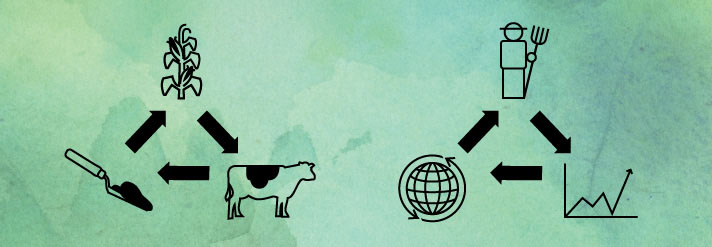
What is biodynamic farming?
There’s organic, and then there’s biodynamic. Taking organic farming a few steps further, biodynamic farming incorporates social, ecological and economic sustainability into consideration for the total health of the soil as well as the plants and animals that are cultivated on it.
Based on the teachings of Dr. Rudolph Steiner, who also founded the Waldorf school movement, the foundation of biodynamic agriculture is in Steiner’s philosophical ideals which he labeled “anthroposophy”. In this system, nature is seen as an interconnected whole organism with its own rhythm to be observed, respected and supported.
From the Biodynamic Farming Association: “Biodynamics is thus not just a holistic agricultural system but also a potent movement for new thinking and practices in all aspects of life connected to food and agriculture.”
Following phases of the moon, consideration of soil microorganism health and using precise mixtures of minerals and biological composts to replenish the system, biodynamic farming aims to create an ecosystem that needs little to no imports to maintain its health and produce delicious food.
By supporting the total “immune system” of a piece of land rather than just the particular symptoms of a crop, like pests or low yields, biodynamic farming seeks to build a robust and healthy complex and adaptive environment.
The Demeter Association founded in 1985 has taken on the lofty mission of “healing the planet through agriculture.” They describe the biodynamic style of agriculture as a perfect example of a truly sustainable closed-loop system, “It is the biodiversity of the farm, organized so that the waste of one part of the farm becomes the energy for another, that results in an increase in the farm’s capacity for self-renewal and ultimately makes the farm sustainable.”
Biodynamic farms and vineyards can now be found all over the country and internationally. For those interested in learning more, check out these online resources or attend a Biodynamic farming conference this November in Madison, Wisconsin.
Apr 3rd, 2012 | By Aubrey Yee
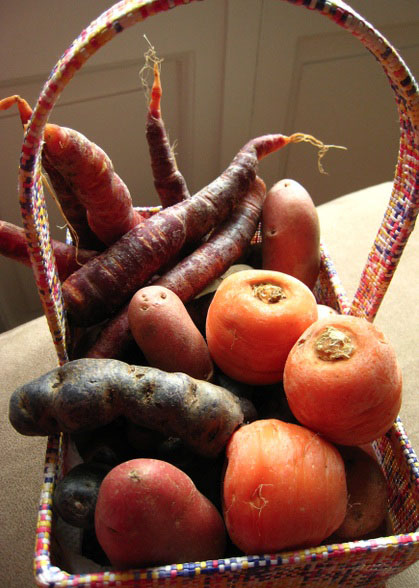 Once upon a time carrots were purple. Really they were! In Roman times, almost all carrots were purple or white. It was a mutant variety that had the orange color and sweeter taste. It took some industrious Dutch farmers several generations of breeding to select out the orange carrot that we have come to expect today.
Once upon a time carrots were purple. Really they were! In Roman times, almost all carrots were purple or white. It was a mutant variety that had the orange color and sweeter taste. It took some industrious Dutch farmers several generations of breeding to select out the orange carrot that we have come to expect today.
Most modern plants and livestock varieties share a similar history of selective breeding. While we only see two or three types of potatoes in a typical American grocery store, in the South American Andes there are some 5,000 potato varieties grown.
“Heirloom” or “heritage” plants and livestock breeds are important to maintaining food resilience. In the world of livestock, heritage animals were bred over time to produce more milk, gain weight quickly, and withstand the conditions of typical industrial production such as more cramped quarters and confinement. The heritage breeds on the other hand are often more capable of withstanding diseases and environmental changes, qualities that may be important in the future.
The American Livestock Breeds Conservancy is one of the non-profits focused on conserving the genetic heritage of over 180 breeds of livestock and poultry.
The Seed Savers Exchange is a non-profit that saves and distributes heirloom plant varieties. They believe, “A vibrant, diverse plant world is necessary for our survival, but that world is increasingly threatened by climate change, habitat loss, and over-exploitation.” The Millennium Seed Bank Partnership estimates that some 60,000 to 100,000 plant varieties are currently under threat of extinction.
In an effort to shift the tide and preserve the genetic diversity of plants in cultivation, the Seed Savers have a library of resources and an online store and catalog where you can purchase heirloom seeds for your garden. Try out some white cucumbers or delicious heirloom tomato varieties to do your part in propagating rare seeds and sowing sustainability.
Sep 21st, 2011 | By jeff
In a movement propelled by environmental concern, nostalgia for a simpler life and a dollop of marketing savvy, developers are increasingly laying out their cul-de-sacs around organic farms, cattle ranches, vineyards and other agricultural ventures. They're betting that buyers will pay a premium for views of heirloom tomatoes—and that the farms can provide a steady stream of revenue, while cutting the cost of landscaping upkeep.
Continue Reading
